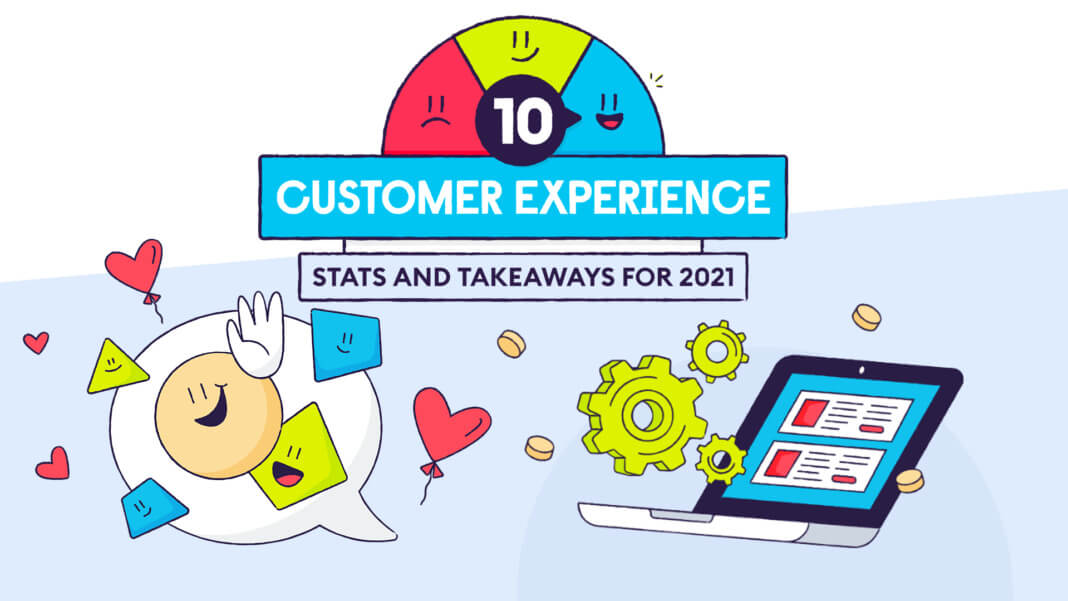We all know that the experience customers have with your brand is important. From when they hop on your website to purchase when they call your customer service team to chat through an issue, having a positive experience with your brand is how you create customer loyalty. But with many verticals experiencing higher levels of competition than ever before, keeping and maintaining customers is proving difficult.
But the last year can teach us a lot about what is important to customers, and more importantly, what isn’t important. With everyone socially distancing and staying indoors, the face-to-face aspect of the customer experience is long gone. In its place are online chatbot, customer service lines, and website interaction. And while these aspects of your business are a bit more static, that doesn’t mean they can’t be improved to increase your sales and bring back customers.
Below, we took a deep dive into some of the most popular CX statistics from the past year. These statistics, taken from a wide range of sources, can help give you a better idea of what businesses succeed in the past year and why.
Customer Experience Statistics
When looking at the businesses that succeeded, there is a clear pattern to what they prioritized in the past year. Take a look at the statistics below and see any lessons you can learn from these experiences (hint: staying virtually connected is key).
- A billion-dollar company will earn, on average, over $775 million in three years just by making small customer experience improvements.
- There’s an extremely high correlation between a positive CX and the likelihood of repurchasing.
- Over 80% of the best-performing companies on the human experience in regards to their digital platforms.
- No matter the industry, over 90% of businesses say that CX is a primary focus for their brand.
- Almost a third of consumers (32%) say they will not use a brand they used to love after one bad experience.
If the above does enough to convince you of the importance of customer experience, check out these statistics on what happens when companies prioritize customer satisfaction.
- 88% of consumers say that voice is their most used (and most lived) customer service channel.
- 78% of consumers are loyal to brands that understand their needs and goals.
- Nearly one-third of customers in any industry would pay extra to get prioritized customer service.
- 78% of the world (and 90% of Millennials) prefer smartphones for customer service interactions above all other forms of communication.
- 14% of brands focused on improving their CX in the past year because they understood just how important this category of their business is.
Future CX Trends
Looking towards the future, the customer service industry is expected to make a lot of changes. The past year has changed how people shop, meaning they are more likely to shop online (and ask for help) than ever before.
And they aren’t just returning to their old favorite stores. With the pandemic shuttering many stores worldwide, consumers have been forced to seek out new brands to purchase their wants and needs. When coupled with more and more time spent seeing Instagram ads, that leads to even more new customer possibilities for brands of all kinds.
The following data points on the future of customer engagement will help you plan the next few years of strategy for your business.
- 40% of people report shopping online way more than they used to in 2020.
- Over 80% of marketers predicted that their main avenue of competition with other brands would be in CX by 2019.
- 3/4ths of consumers in America tried a new store or had a new shopping experience throughout the pandemic.
- The pandemic has accelerated digital transformation, and 70% of company executives agree.
- 82% of U.S. consumers and 74% of non-U.S. consumers want more human interaction during their shopping experience moving forward.
Now that you have an idea of just how important CX is for your business, check out the infographic from Chattermill below. You’ll learn not only that the most successful companies that came out of the pandemic focused on customer engagement, but exactly how they implemented their strategies and created a loyal customer base that will return to them long after the pandemic ends.






